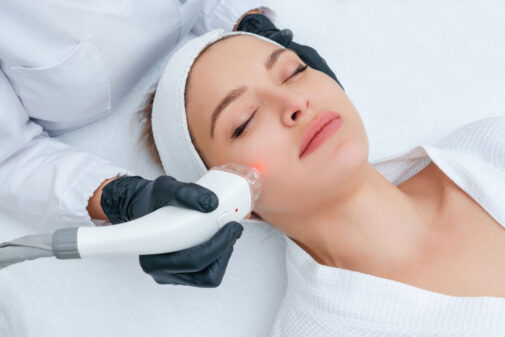One in five Americans will develop this in their lifetime

Here’s a statistic you may find surprising: One in five Americans will develop skin cancer during their lifetimes. Your odds of having skin cancer rise as you get older and if you have a family member who has had skin cancer.
In fact, over the past three decades, more people have had skin cancer than breast, prostate, lung and colon cancer combined.
Here are a few other eye-opening statistics. Each year in the U.S., more than 3.3 million people are treated for non-melanoma skin cancer, according to the American Cancer Society. Since some people can have a skin cancer recurrence, the total number of cases treated annually is 5.4 million.
About 90% of non-melanoma skin cancers are related to exposure to the sun’s ultraviolet radiation (UV rays). That’s why you often hear reminders to wear sunscreen or protective clothing when you’re in the sun.
So what do you need to know?
Early diagnosis can save lives
Skin cancers that are found and removed early have a good chance of treatment success.
To find a skin cancer early, follow the recommendation from The Skin Cancer Foundation. Do a monthly head-to-toe self-examination of your skin. The examination should check for new or changing moles or lesions that might be precancerous or cancerous.
Checking your skin monthly allows you to become familiar with irregularities on your skin. Spotting changes on your skin is the first step in discovering the development of skin cancer.
A good time to check your skin is after a shower or bath. A full-length mirror, a hand-held mirror and good lighting are the tools you’ll need for a self-examination.
If you have a partner and you’re comfortable helping each other, your partner can help you do the check. He/she can check parts of your skin you may not see well.
Think about the health benefits of a potentially life-saving skin checkup – they may outweigh your hesitation to have a partner help out.
If you or your partner notice something questionable on your skin, you should consult a health care professional immediately. A dermatologist is a professional who can provide care for a number of skin conditions, including skin cancer.
So what should you look for?
During your monthly check, become familiar with your moles. Note what they look and feel like. The National Cancer Institute recommends you take these steps during your skin check:
- Look at your face, neck, ears and scalp. (This is when a partner can be especially helpful since you’ll want to move your hair to see better.)
- Look at the front and back of your body in the mirror (a partner can get a good look at your back.) Raise your arms and look at your right and left sides, too.
- Check your arms. Look carefully at your fingernails, palms, forearms (front and back) and upper arms.
- Look at the back, front and sides of your legs.
- Check the skin all over your buttocks and genital area. (This is another area where a partner can be helpful. You can decide if your safety, health and welfare overrides inhibitions.)
- Sit and carefully check your feet. Look at your toenails and the soles of your feet. Check the skin between your toes, too.
During your skin check, watch for:
- New moles that look different from other moles.
- A new red or darker flaky patch that may be raised above the surrounding skin.
- A mole that changes size, shape, color or feel.
- A sore that doesn’t heal.
- A new flesh-colored firm bump.
Write down the dates of your skin checks on a calendar. Make note of the way your skin and moles look on those dates. You might want to take photos so you can note changes over time.
Anyone can get skin cancer, but it’s more common if you:
- Are 50 or older.
- Have a family member who has had skin cancer.
- Have light skin, hair and eyes.
- Spend a lot of time in the sun or have been sunburned.
If you have these risk factors, you may want to get a skin cancer screening. Your health care professional can provide the screening.
For more information about a screening in Wisconsin, click here. For more info about one in Illinois, click here.
Dr. Jing X. Zhang is a dermatologist at Aurora Wilkinson Medical Clinic in Summit, Wis.
Related Posts
Comments
About the Author
Jing X. Zhang, MD is a dermatologist at Aurora Wilkinson Medical Clinic in Summit, WI.

















